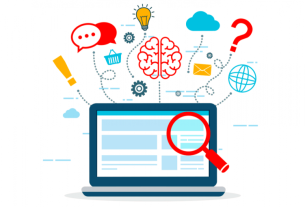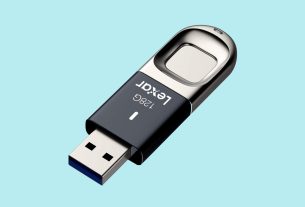[ad_1]
Apple’s Vision Pro, the technology giant’s entry into the wearable computing world, is receiving mixed reviews due to its high price tag, starting at $3,499 (approximately NIS 12,800).
Apple claims that the glasses symbolize the beginning of the era of “spatial computing,” a new way for users to operate digital apps through their eyes. The company’s advertisements do not shy away from bold promises, showcasing people incorporating the Vision Pro into their everyday lives – at work, at home, and on the go. So, what is the justification for the price, promises, and media buzz? I managed to get my hands on the glasses and embarked on a quick 24-hour test. Spoiler: the moment you put them on, you realize that the world of computing will no longer be the same.
Apple stated at the Vision Pro launch that the glasses would only be on the market in the United States. In the past week, various reports began to claim that the company is planning an additional release of the glasses to other parts of the world in the fourth quarter of 2024. Therefore, we turned to iStore, Apple’s official distributor in Israel, to find out if there are future plans to launch the glasses in the country. They informed us that the Apple Vision Pro was launched on February 2 in the US, and the release date for the product outside the borders of the United States, including Israel, has not yet been determined.
Setting up the Apple Vision Pro
The first step in assembling the glasses involves a short process of calibration by tracking the eyes – one needs to look at different points and then tap them with a finger. Overall, the setup process of the Vision Pro is easy, user-friendly, and simple to use from the first operation.
During the setup, one will learn how to use eye tracking and hand tracking, become familiar with basic gestures, create a profile (called a Persona), and more. All steps can be edited later in the device settings.
The overall construction of the Vision Pro remains true to Apple’s design DNA. The product features clean lines, soft and pleasant-to-touch fabric, and a luxurious aluminum finish that gives the glasses an elegant look. Additionally, Apple integrated a wheel that allows for easy shortening or lengthening of the straps to easily fit any head shape. The glasses are equipped with only two buttons – on the top right side is the Digital Crown – a familiar button for any Apple Watch user used to center the home screen or immerse into a virtual environment (e.g., snowy mountain background instead of your room space). On the opposite side, there is a button used to power the device on or off and switch to camera mode, also similar to the design of the Apple Watch.
The Vision Pro weighs 650 grams – a weight equal to three iPhone 15 Pro Max devices. In the first few minutes of use, the weight is not noticeable, but after 10-15 minutes, you begin to feel the strain on your neck and the bridge of your nose. Users who plan to use the glasses for short periods of time may not be bothered by these 650 grams, but may become too heavy for those who expect prolonged use. Additionally, the external battery that is connected by a cable and can be carried in your pocket adds even more clutter to the experience. However, it should be noted that Apple has succeeded where other giants of technology, such as Microsoft and Meta, struggled: Apple managed to cram all the most advanced technology into glasses that are still relatively comfortable to wear and work phenomenally well.
Imagine having screens in all directions. On the left, there is YouTube on an open browser, in the center, pictures you have taken, and on the right, your email inbox. All of this is controlled by your eyes and fingers. And now in more detail: Apple has rightly boasted about its eye and hand tracking control system, claiming it is years ahead of any other technology on the market. How does it work? Essentially, your eyes function as a mouse and your fingers as buttons, instead of physically tapping. Yes, the sensors detect where your eyes are looking – they highlight the object, and with a hand, perform a click. In the same way, you can drag windows, enlarge screens, or close them.
For example, when my eyes scanned the familiar app icons in the main menu, such as Safari, Mail, or Gallery, each one came to life, ready to open with a shared touch from my thumb and index finger. To have the best experience and examine the video quality on the Vision Pro, I watched a 4K video on YouTube through the browser. The result was a sharp and clear video displayed fantastically. The built-in speakers in the front part with Spatial Audio also sounded excellent, but of course, consider the issue of privacy as those around you can also hear.
Furthermore, the Vision Pro transfers an image from real-world cameras to the internal micro-OLED screens. Although the image is somewhat blurry – colors are washed out and objects are blurred – it is the best attempt so far to integrate augmented reality into a product in this category. It is an amazing engineering achievement, and Apple claims there is only a delay of 12 milliseconds between what the cameras see and what is displayed on the user’s screen.
Some technical details: the processor that handles all this is the M2, the same one found in Mac computers, without the need for cooling, alongside a new processor called R1 that handles data from all the cameras and microphones.
During the first use, even during the glasses setup, control over the Vision Pro feels empowering. The external cameras identify your hands in a wide range around the body, so you can place them on the couch, on your knees, or on the table – almost anywhere. It takes time to realize that you don’t need to gesture in the air, and it’s amusing to see other people instinctively make that motion in their first attempt with the glasses (yes, me too). However, the typing experience is frustrating and slow. Selecting a character is done by looking and double-tapping the key, or by slow two-finger typing, which can become inconvenient over time.
A simple action like entering a username and password becomes a challenge. At least for now, the keyboard is the best solution. Another important point to remember is that despite the large battery, the battery life is only about two hours. Constantly plugging into power is possible which means lots of cables – not ideal for outdoor use.
This section can be divided into two – positive and negative: On the positive side, within five minutes of use, I already felt like an expert in the operating system. This indicates how intuitive the interface is, starting from the clear interfaces taken from iPadOS to the overall control of the glasses. On the negative side, apart from Apple’s own applications (Safari browser, Apple TV, Mail, Weather, Apple Music, Photos, etc.), there are no popular applications tailored for Vision Pro, and it should be noted that only recently Netflix announced that it does not plan to release a dedicated application.
The control center is hidden within a floating green dot above the field of vision, after pressing the power button. There you can find access to WiFi networks, Bluetooth, and screen recording. AirDrop is also available here, and it works as simply as on iOS. The files application is also like that, so you can upload things through the iPhone, iPad, or Mac and open them on the glasses, or vice versa.
The Vision Pro glasses are certainly controversial, but they are an amazing glimpse into the future and a significant step forward. They contribute to our ever-developing world of computing and seamlessly integrate to help us to work, play, and create. And yes, it is important to remember that this is a new technology and there is still room for improvement, and the price is very high, making it inaccessible for most people.
However, other technologies, like smartphones, did not achieve immediate success either. Many people initially resisted them and thought they would not be useful. But over time, smartphones have become an integral part of our lives. Remember the first iPhone? The Vision Pro may undergo a similar process as well. It may take time, maybe a few years, for people to get used to it and adapt to it, and no, even though it is very exciting, it’s not a device you have to jump on right now.
[ad_2]
Source link


